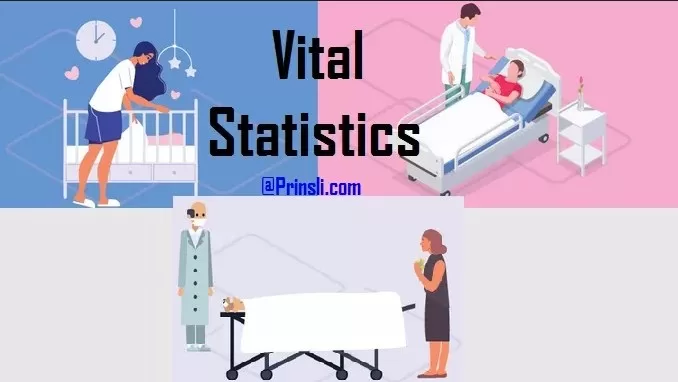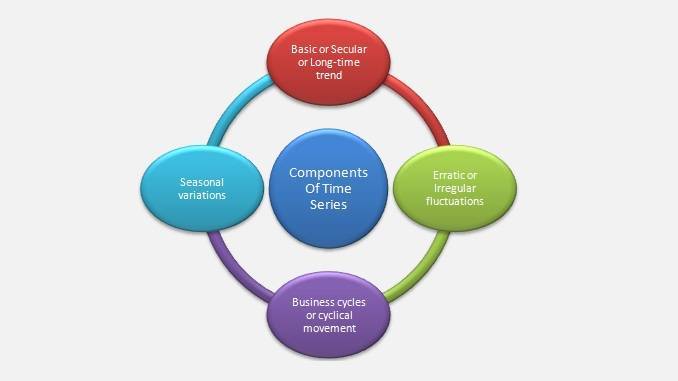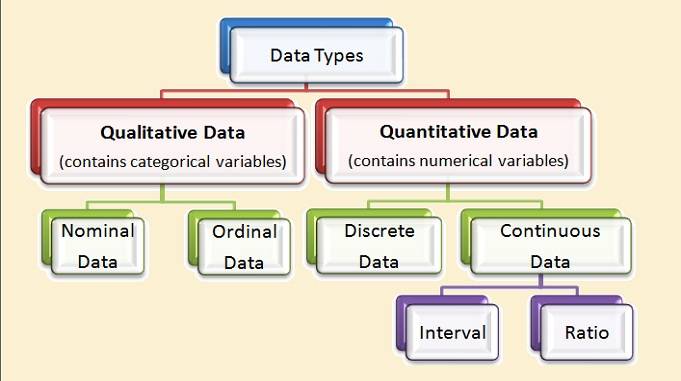
In this article, we discuss Vital Statistics – What is Vital Statistics? Vital Statistics Definition and Vital Statistics Meaning, etc.
Introduction and Meaning of Vital Statistics
The term “Vital Statistics” refers to such statistics which are related to the “vital events” of a population. In other words, the term “Vital Statistics” refers to the data or the methods applied in the analysis of the data which provide a description of the vital events occurring in given communities.
By “Vital events“, we mean such events of human life as birth, death, sickness, marriage, divorce, adoption, legitimation, recognition, separation, etc., in short, all the events which have to do with an individual’s entrance into or departure from life together with the changes in civil status which may occur to him during his lifetime.
In other words, vital statistics are data collected on life-related events such as births, deaths, migration, fetal deaths, marriages, divorces, adoptions, etc. Vital statistics are known by different names such as life tables, statistics regarding birth and death, and essential data of life statistics.
Because vital statistics pertain to people rather than things, consequently, this branch of statistics has perhaps the second oldest history in the world, surpassed in antiquity only by the closely related population census.
Read Also – Sources and Methods of Primary, Secondary & Internal Data Collection
The most fundamental and comprehensive statistical investigation that can be undertaken is a population census, which provides a picture of the population and its characteristics at a moment in time. Vital statistics provide us the tools to measure the dynamics of or the changes that continuously occur in this instantaneous picture.
Definition of Vital Statistics
A few definitions of vital statistics are as follows:
1. According to Arthur Newsholme,
“Vital Statistics” may be interpreted in two ways – in a broader sense it refers to all types of population statistics by whatever mode collected while in a narrow sense, it refers only to the statistics derived from the registration of births, deaths, and marriages.
In “The Elements of Vital Statistics“, Arthur Newsholme writes,
“Vital Statistics forms perhaps the most important branch of statistics as it deals with human in the aggregate. It is the science of numbers applied to the life history of communities and nations.”
2. According to Dr. B. Benjamin,
“Vital Statistics are conventionally numerical records of marriage, births, sickness, and deaths by which the health and growth of a community may be studied.”
3. According to Arthur Newsholme,
“That branch of biometry which deals with data and the laws of human mortality, morbidity and demography.”
The above definitions make it obvious that, in a broad sense, the term “vital statistics” refers to all types of population statistics. The purpose of such statistics is to find out the changing composition of communities or nations with reference to sex, age, education, birth and death rates, marriage, economics, civic status, etc.
Definition of Vital Statistics in Developed and Developing Countries
In developed countries, the definition of the term “Vital Statistics” has been accepted on a very broad basis as they cover most of the events of human life.
Read Also – Difference between Primary Data and Secondary Data
But in developing countries, only ‘Birth and Death’ related statistics are included under Vital Statistics. This is because the life-registration system in these countries is flawed as well as inadequate. Secondly, functions like marriage in these countries are considered sacramental functions which do not have any practice of registration. Therefore, from this point of view, in the narrow sense, “vital statistics” refers only to the data derived from the registration of births and deaths.
Vital Statistics in India
The Vital Statistics System in India is called the Civil Registration System (CRS). This system is maintained by the Vital Statistics Division of the Office of the Registrar General and Census Commissioner of India. Vital statistics for India can be found at CRSORGI.
What is Civil Registration System (CRS) – Civil Registration System (CRS), popularly known as the Birth and Death Registration System, is the recording of vital events i.e. Birth, Death & Still Birth under the statutory provisions on a continuous and permanent basis. CRS falls under the Concurrent list of the Constitution of India at Sl. No. 30. Vital statistics obtained from civil registrations contributes significantly to the formulation of effective and efficient evidence-based policy across multiple sectors.
Read Also – Difference between Data, Information, and Statistical Data in Statistics
Current Status of Vital Statistics in India – At the national level, the report “Vital Statistics Based on Civil Registration System” for the year 2019 has been released on 15th June 2021. The proportion of registered births and deaths has witnessed a steady increase over the years. The registration level of births for the country has gone up to 92.7% in 2019 from 82.4% in 2011, whereas on the other hand, the registration level of deaths during 2019 has increased to 92.0% from 66.4% in 2011.
(Source – Various Books from College Library)
Tags: vital statistics definition, vital statistics meaning, sources of vital statistics, what is vital statistics
Copyrighted Material © 2019 - 2024 Prinsli.com - All rights reserved
All content on this website is copyrighted. It is prohibited to copy, publish or distribute the content and images of this website through any website, book, newspaper, software, videos, YouTube Channel or any other medium without written permission. You are not authorized to alter, obscure or remove any proprietary information, copyright or logo from this Website in any way. If any of these rules are violated, it will be strongly protested and legal action will be taken.





Be the first to comment